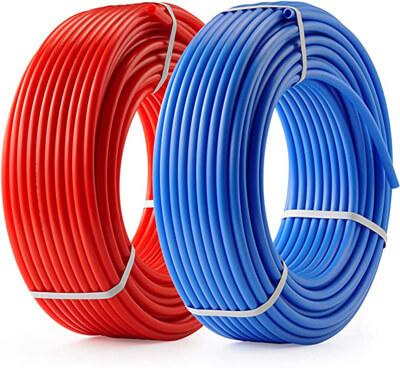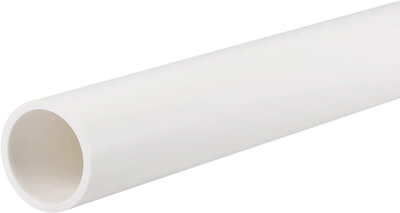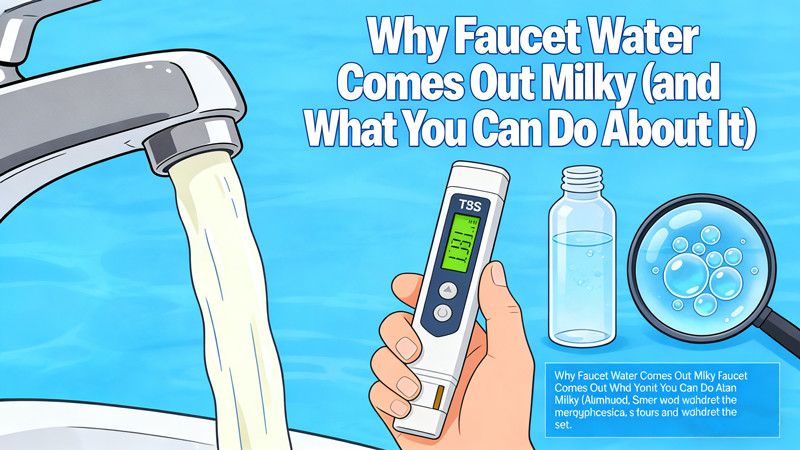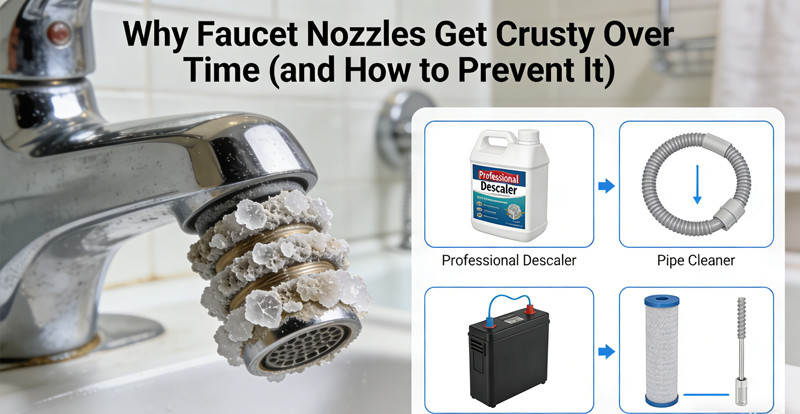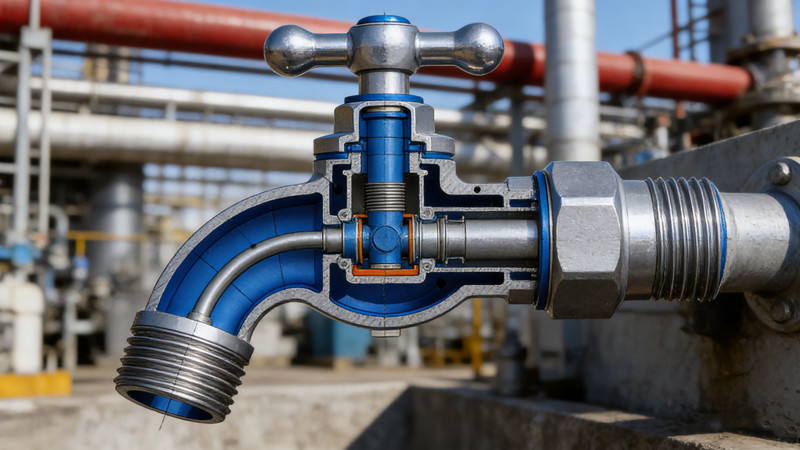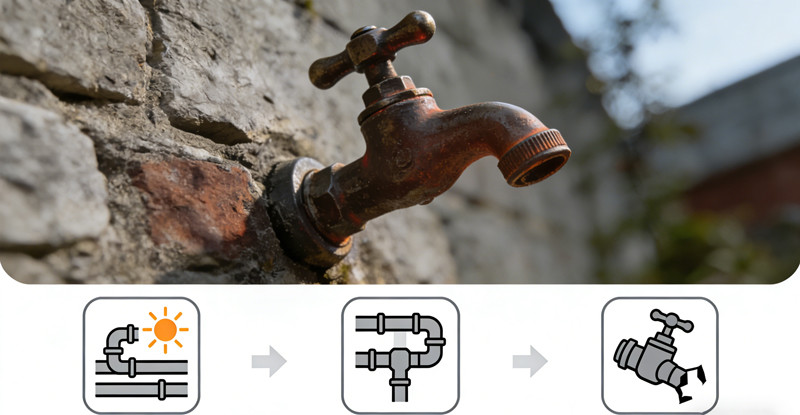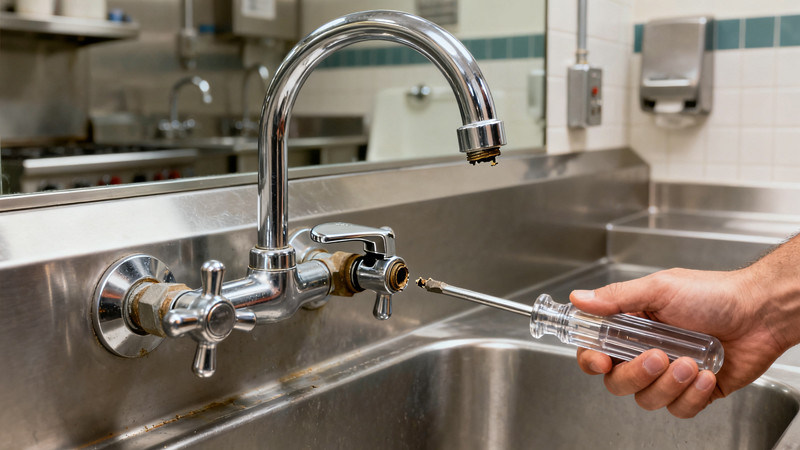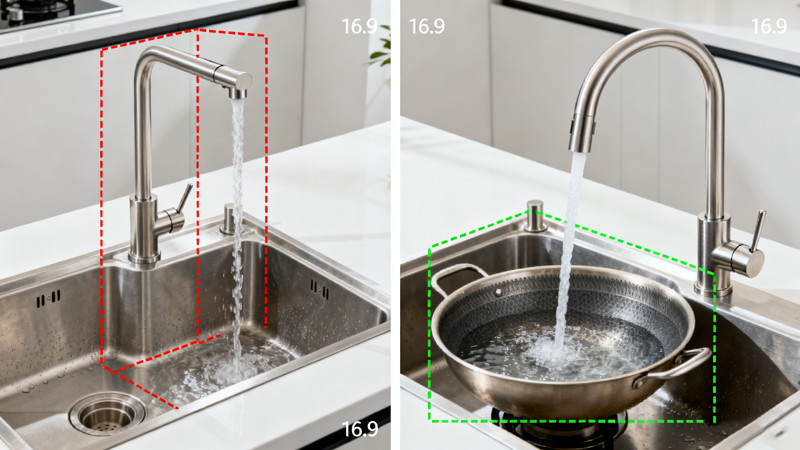PEX vs PVC vs Copper Pipe: Which Is Better, Pros and Cons, Differences
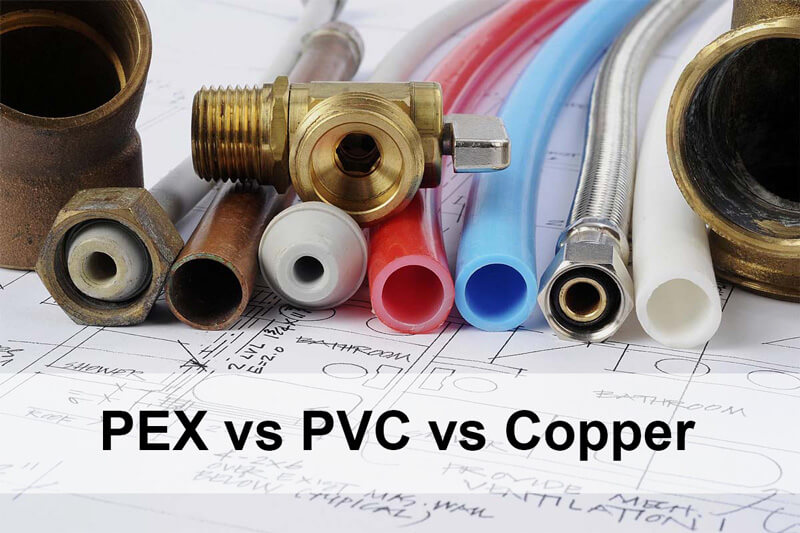
When choosing plumbing piping, it’s important to understand the differences in materials, and to consider the application. The materials of piping mainly include PEX, PVC copper, etc. All of them have their advantages and disadvantages. In this post, we will compare PEX vs PVC vs copper pipe and discuss in various aspects like their pros and cons, disferrences, which is better, etc.
PEX
The term PEX stands for “cross-linked polyethylene”. PEX pipe is manufactured by melting high-density polyethylene and extruding it in tubular form. The material was first introduced to the United States only 40 years ago, but it is rapidly gaining popularity. Compared to copper and PVC plumbing pipes, PEX has its own advantages and disadvantages listed as follows.
PROS
- Installing PEX does not require soldering as does copper and galvanized steel.
- PEX expands, making it more resistant to freeze-cracking than either copper or steel.
- PEX does not corrode, which can happen with both copper and steel pipes, leading to leaks and contamination of the water supply.
- Water flows silently through PEX, eliminating the “water hammer” noise associated with metal piping.
- Color-coding (red and blue) make it simple to distinguish hot and cold supply lines.
- PEX can be connected to existing metal supply lines with the correct fittings.
CONS
- PEX is not suitable for outdoor use. Ultraviolet rays cause PEX to break down quickly—tubing left outdoors can harden and crack within a couple of months.
- PEX cannot currently be recycled, because it does not melt as other recyclable plastics do. With the popularity of PEX rising, however, the demand for a way to recycle it will also likely rise.
- Though installation is DIY-friendly, working with PEX requires special connectors and tools.
PVC
The term PVC stands for polyvinyl chloride. It is a chlorinated hydrocarbon polymer. In its natural state, it is rigid and brittle. But when combined with additives such as plasticizers, it becomes more resilient and malleable. Its most widespread use is in the manufacture of pipes, which are used in water supply, plumbing and irrigation. Here are the pros and cons of PVC.
PROS
- Plastic pipes do not corrode as easily as metal pipes. If your water is a bit acidic, it can cause damage to metal pipes, wearing them down until pinholes and leaks appear. For example, PVC pipes are more resistant to acidic water.
- The plastic is resilient under water pressure and can reduce or eliminate any knocking in the pipes.
- Plastic pipes are easier to install because they are lighter than metal pipes and do not require metal welding at the joints.
- The life expectancy of plastic pipes is between 40-80 years, depending on the specific material used.
- Plastic is much cheaper (eg cheaper than copper).
CONS
- Plastic tubes are larger than metal, which limits their use in tight spaces.
- Some plastic materials deform at high temperatures.
- Like most pipes, they can burst if they get frozen.
- Plastic lacks the antimicrobial properties of copper, which some homeowners see as a health risk.
Copper
Copper pipe is a tubular material made of copper. Copper pipes are most commonly used for refrigerant lines in heating systems and HVAC systems. There are two basic types of copper pipes, soft copper and hard copper. Copper pipes use flare connections, compression connections, press connections or solder connections. Copper offers a high level of corrosion resistance but becomes very expensive.
PROS
- Copper water pipes are durable. This pipe material can withstand pressures up to 1000 psi. Copper pipes have an average lifespan of 50 to 70 years.
- Another reason copper pipes are popular compared to PEX and PVC is their ability to withstand hot and cold temperatures.
- Copper pipes do not contaminate water. Copper plumbing pipes stand the test of time because they do not release hazardous substances into the water.
- Copper pipes are easy to install because they are not heavy. In addition, this material is highly flexible
- Unlike PEX and PVC pipe, the manufacturing process of copper pipe is environmentally friendly as it releases fewer hazardous emissions and chemicals into the environment.
- Because copper pipes have a high heat resistance rating, they are fire resistant. Copper is an excellent choice for homeowners concerned with working with flame retardant materials.
CONS
- Copper pipes are expensive, and copper pipes are more expensive than plastic pipes such as PVC and PEX.
- While it’s rare, copper plumbing can add a metallic taste to your drinking water, which can be off-putting to some homeowners.
- If you rely on well water or water with high acidity, you may have problems with the copper pipes in your home a few years after installation.
PEX vs PVC vs Copper Pipe: Which Is Better
When choosing pipes, the three most common types you’ll come across are PEX, PVC, and copper, so it’s important to cover the comparisons we’ve made of these two plastic varieties with copper. Is copper piping better than PVC? Is PEX pipe better than PVC?
Actually, when it comes to life expectancy, copper is a good ranking, similar to 50 to 70 years for PVC pipes. It’s durable, can be used for a variety of purposes, and typically comes with a 50-year warranty that far exceeds what you’d expect from PVC or PEX.
However, copper is the most expensive of the three, and by a wide margin. You can expect to pay $2 to $4 per linear foot of copper pipe, which is $1 to $2 more than PVC or PEX. Still, it does offer some advantages.
Since copper bends significantly before it even has a chance to break, it is unlikely to break under normal non-freezing conditions. In earthquake-prone areas, avoiding devastation when a natural disaster strikes is the best option. Copper pipes also don’t corrode and handle extreme temperatures well. Unlike PEX pipes, they are UV resistant and also resist the buildup of bacteria and biofilms.
One of the disadvantages of copper pipe is that it is difficult to install. Due to the rigidity and every corner you encounter, it will have to be cut to size; you will need elbow fittings, similar to PVC pipe. Copper may also end up in the water, some say, making it harder, metallic, and harder to digest.
There is no definitive right or wrong answer in the PVC vs PEX vs copper debate. You really need to understand which method and materials you or your builder chooses. In the end, you may not have much choice as a consumer.
 WOWOW Faucets
WOWOW Faucets